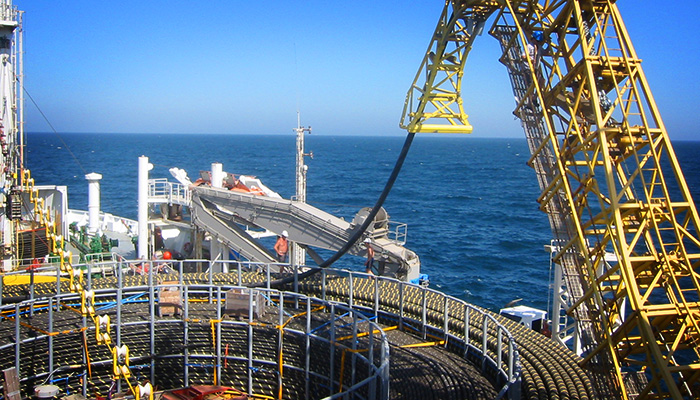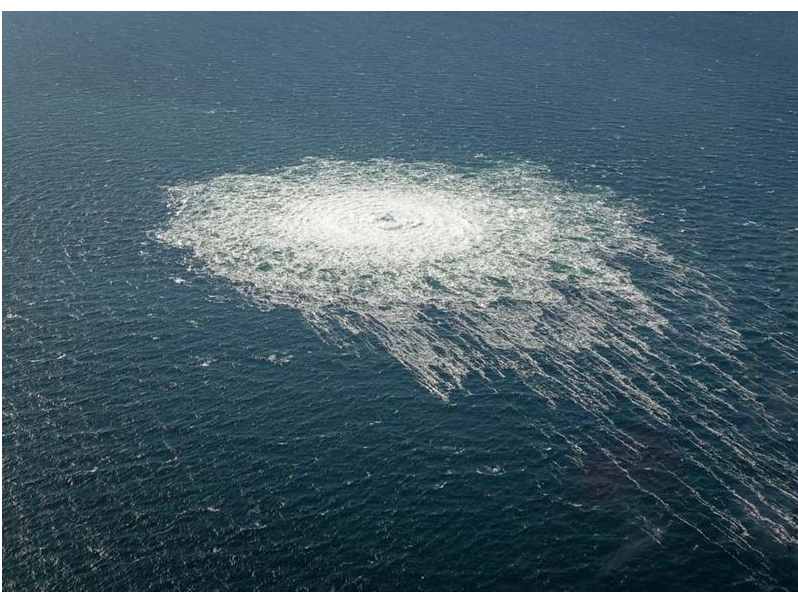The Financial Times reported on May 12 that the European Union is planning to lay a submarine Internet cable in the Black Sea to improve communications with Georgia and reduce reliance on Russian lines due to concerns about the "vulnerability of infrastructure for transmitting global data.
The Financial Times specifies that the EU plans to lay a Black Sea submarine Internet cable to reduce its dependence on Russia.
The 45-million-euro, 1,100-kilometer cable will "connect EU member states to the Caucasus region through the international waters of the Black Sea.
The European Commission said in a policy paper that the project aims to reduce the region's "dependence on land-based fiber-optic connections transiting Russia," but it is currently in the feasibility assessment phase and has not yet been put out to public tender.
In 2021, the EU and Georgia jointly identified the need for a Black Sea Internet cable to improve Georgia's digital connectivity.
A source said the Russian-Ukrainian conflict arguably drove the project as both sides considered reducing their reliance on "insecure or unstable connections.
The Financial Times mentioned that about 99 percent of intercontinental Internet traffic - data, messages, emails, and video calls - is transmitted through more than 400 submarine cables stretching 1.4 million kilometers.
Since the explosion of the Nord Stream gas pipeline last September, there have been growing concerns about the safety of offshore infrastructure.

Some European politicians have begun to speculate about the "threat" posed by Russia, which is one of the necessary destinations for several Asia-Europe data transmission routes and an integral part of the connection between Asia and some parts of the Caucasus.
For example, MEP Reinhard Petkoffel claimed that if Russia wants to harm the European Union, it could go after such infrastructure.
Another MEP, David McAllister, also said that the Black Sea cable is a "flagship project" of the EU and a regional priority, without which there would be no videoconferences, research cooperation, and "Netflix" programs, "and the Russians know it. The Russians know this too."
According to the Financial Times, the project's feasibility and timeline are uncertain given the Russian Navy's activities in the Black Sea region.
British communications giant Vodafone Group is also exploring the possibility of developing a cable route through the Black Sea, according to two sources.
The project, dubbed "Kardessa," would connect Ukraine, Bulgaria, Turkey, and Georgia, and then continue overland to Armenia, Kazakhstan, and then to Asia.
A source familiar with the project said that as many routes as possible are needed at key nodes and that Vodafone is currently discussing the project with potential suppliers.
Russia and the current political situation are also among the project's considerations, the source added.
The EU also plans to build a separate cable under the Black Sea as part of the "Global Gateway" initiative, which could enhance the EU's "security of supply" by linking Hungary, Romania, Georgia, and Azerbaijan, the report said.
Simply put, a submarine cable is an important carrier for a submarine fiber optic cable system.
Modern submarine cables use fiber optic technology, where a fiber optic cable consists of multiple fibers.
Being in a complex marine environment, submarine fiber optic cable needs to have a large capacity, high reliability, low loss, strong resistance to electromagnetic interference and other characteristics, but also excellent resistance to water pressure, corrosion resistance, hydrogen loss resistance, large length, and other properties.
This means that it greatly increases the difficulty of making submarine fiber optic cables.
So, how thick is a submarine fiber optic cable?
Zms cable before reading this paragraph had described the submarine cable: "The diameter of only adult thumb thick submarine fiber optic cable up to more than 35,000 km, can transmit 100 terabits per second or more data, submarine fiber optic cable is like a dense distribution of blood vessels on the ocean, even in the cold depths of the ocean, there are traces of it. "
TeleGeography, a leading market research firm, notes that for most of the distance across the ocean, a fiber optic cable is usually as thick as a garden hose.
Among other things, optical fibers are usually only as thick as human hair, and these fibers are wrapped in several layers of insulation and protective layers.

Currently, more than 95 percent of the world's international data is transmitted via submarine fiber optic cables.
In terms of countries covered, only 44 landlocked countries without coastlines among nearly 200 countries worldwide cannot rely directly on international submarine cables for communication.
In terms of volume, according to TeleGeography, there are approximately 378 submarine fiber optic cables in operation worldwide as of early 2019.
The advantages of submarine cables over other transmission methods are also more obvious.
For example, although satellites can reach areas that do not have fiber optic connections, the bandwidth provisioning capability is significantly less compared to submarine cables; land-based cables, although they have the advantage of lower construction and maintenance costs, are mostly limited to communication scenarios between neighboring countries.
The above data is enough to illustrate the importance of submarine cables to a country or the connection between two countries. So if anyone dares to lay hands on the submarine cable, the consequences will be incalculable.
In general, submarine cables still have a great future. Mankind still explores the ocean too little.
With the continuous advancement of technology, feedback from the ocean will not disappoint us. I believe that mankind's exploration of the ocean will never stop here.